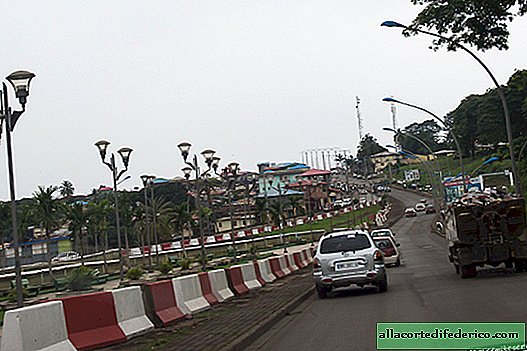Vaiont Dam in Italy: why did you have to lower the reservoir and throw a new dam
In northern Italy, in a narrow valley on the Vaiont River, there is an arched dam with a height of over 260 meters. But a reservoir is not hidden behind it, as is the case in such cases. On this mountain river, ideally suited for the construction of hydropower plants, it was planned to create a cascade of these structures. The construction of the Wyont Dam was completed in the 60s of the last century, but it was never used to generate electricity, and this will never happen. The dam, which was high-quality and technically sound, was abandoned due to the tragedy, the scale of which no one could have foreseen.
 Modern view of the Wyont Dam
Modern view of the Wyont DamAny reservoir created with the aim of supplying water or generating electricity is a potentially dangerous industrial object. The colossal volume of water accumulated in an artificial reservoir and held only by a dam is fraught with many threats. Most believe that the occurrence of emergency situations is possible only if the dam is damaged. Indeed, for a number of reasons (catastrophic earthquake, engineering errors during design, defects in building structures or materials, anomalous amount of precipitation leading to overflow of the reservoir), the dam can be damaged, which will lead to the release of a colossal water mass. But, unfortunately, large-scale catastrophes have occurred in history, which occurred without dam damage.
 Dam before disaster
Dam before disasterThe history of the Wyont Dam, located at the foot of Mount Monte Tok, is notorious throughout Italy. When the construction of the concrete dam was completed, the engineers began to fill the reservoir. Arched type dams are considered the most reliable, able to withstand large seasonal loads, and they are most often built in narrow mountain river valleys. That was exactly the Wyont Dam, whose height is 261 meters. But the danger was not in the vulnerability of the dam, but in the mountains adjacent to the reservoir.
 Vayon Dam remains highest in Italy
Vayon Dam remains highest in ItalyBack in 1959, in the midst of construction, on the slopes of the neighboring Monte Tok mountain, soil mobility was noted. But the dam was in full swing, the big investments and prestige of the owner of SADE were at stake, whose engineers were engaged in the design and construction of the dam, so at this unpleasant moment they decided to “ignore”. In the fall of 1960, the first, relatively small landslide descended into the reservoir. At that time, the artificial reservoir was already more than half full with water, and the water level was 190 meters. After the incident, the water level was lowered, engineers began to assess the extent of what is happening. Another plot of moving soil was discovered that threatened to turn into a larger landslide. The reason for the instability of the rocks was also recognized as the process of filling the reservoir: an increase in the water level in the valley led to a change in the groundwater level in the surrounding mountains. According to experts, the new landslide could provoke a wave about 20 meters high. To prevent water splash and damage to the settlements located below, engineers proposed lowering the water level in the reservoir, which was done.
 Landslides are indicated by arrows
Landslides are indicated by arrowsBy the fall of 1963, the water level in the reservoir was 237 meters, and there were exactly 25 "spare" meters to its crest. The situation was tense: in addition to soil movements caused by the filling of the reservoir itself, the situation was aggravated by the abundance of summer and autumn precipitation in the mountains of Italy, which also led to instability of the surrounding mountain slopes. Engineers expected a landslide, but there were no serious concerns, because all measures were taken, and the simulated wave height should not exceed 20 meters.
 View of the reservoir after the disaster
View of the reservoir after the disaster  Trees are growing at the bottom of the former reservoir
Trees are growing at the bottom of the former reservoirDuring the disaster, the Vaillont dam itself was virtually unaffected, withstanding a tremendous load. But for obvious reasons, the reservoir was decided to be decommissioned and flushed all the water. Today, one of the most elegant and picturesque dams in the world remains the highest in Italy. Since in 2002 it was open to the public, many tourists have been here. In memory of the disaster, a chapel was built near the dam.
 Since 2002, the dam has been equipped for tourists to visit.
Since 2002, the dam has been equipped for tourists to visit.

















